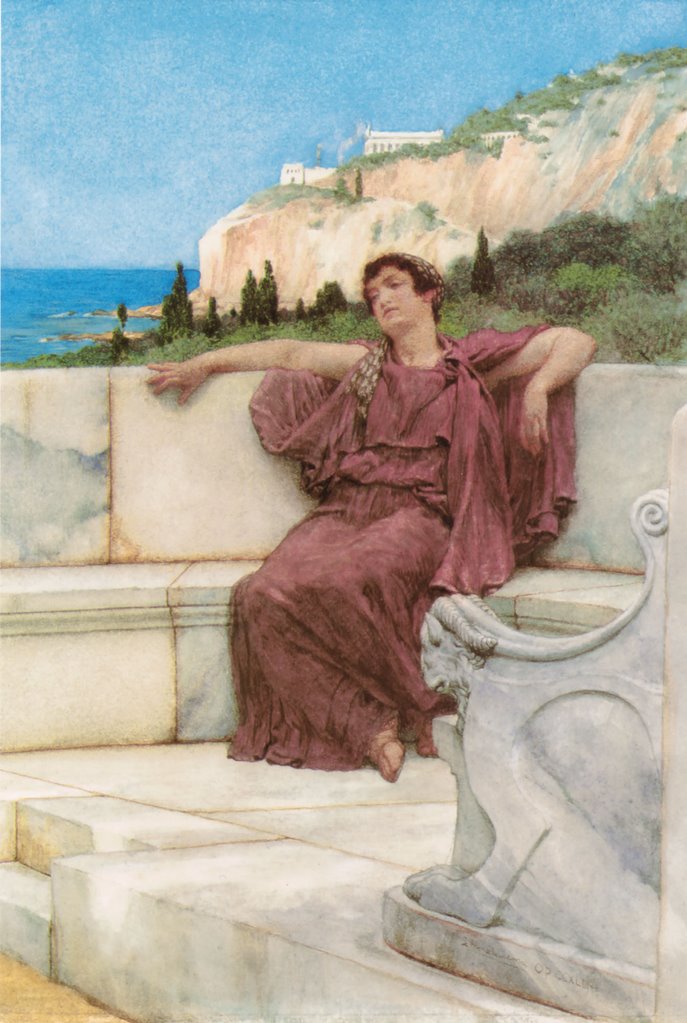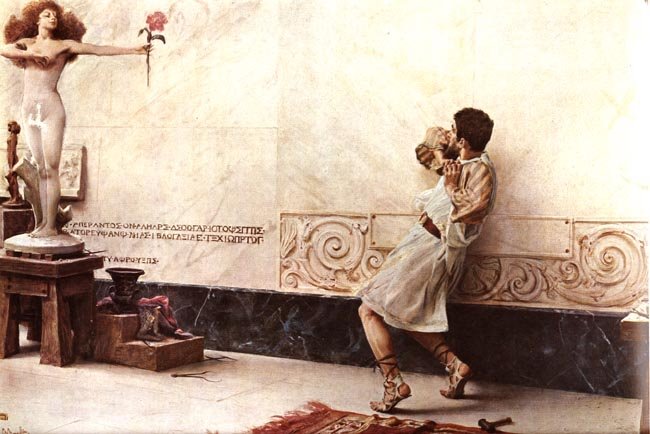


And before the list, three nice Bouguereau's pictures: "La baigneuse" & both his "Apres le bain" (worth confronting with renoir's crap: no wonder the "Mafia of the scarabocchi" hated such able painters) and, of course worth confronting with the 1875 version of the "Apres le bain" by the same painter. No wonder, seen a baigneuse of his pupil Matisse (another among the many 'scarabocchi mafiosi'), that they hated Bouguereau. Matisse left quickly his studio, despite the fact that Bouguereau at first tried to encourage him, but soon threw up his hands in exasperation, noting the young man’s weaknesses, “You badly need to learn perspective,” he said to him, “But first, you need to know how to hold a pencil. You will never know how to draw”. How true.
Here the promised list of all 'pompous pompiers' painters
Adolf Schreyer, Adolphe William Bouguereau, Adolphe Weiz, Adrien Dauzats, Albert Edelfelt, Alexandre Antigna, Alexandre Cabanel, Alexej Harlamoff, Alfred Guillou, Alphonse-Marie-Adolphe de Neuville, Anna Bilinska, Antonio Mancini, Antoine-Joseph Wiertz, Ary Scheffer, Auguste Glaize, Carolus-Duran, Charles Baugniet, Charles Chaplin, Charles Edouard Delort, Charles Edward Boutibonne, Charles Gleyre, Charles Landelle, Charles Muller, Charles Sims, Charles Spencelayh, Constantin Hansen, Delphin Enjolras, Dominique Louis Papety, Edmond Comte de Grimberghe, Edouard Debat-Ponsan, Edouard Detaille, Eduardo Zamacois y Zabala, Edwin Lord Weeks, Emile Levy, Emile Munier, Ernest Hebert,Eugene de Blaas, Eugene-Emmanuel Amaury-Duval, Evariste-Vital Luminais, Fenner Behmer Hermann, Ferdinand Heilbuth, Fernand Cormon, Francesco Paolo Michetti (1851-1929), Francisco Masriera y manovens, Francois Flameng, Franz von Defregger, Franz Xavier Winterhalter, Frederic Soulacroix, Friedrich von Amerling, Gabriele Castagnola, Gabriel-Francois Doyen, Gaetano Bellei, Giovanni Boldini, Giovanni Costa, Gustave Boulanger, Gyula Tornai (1861-1928), Hans Makart, Hans Zatzka, Henri Gervex, Henri Regnault, Henryk Siemiradzki, Horace Vernet, Hubertus van Hove, Isidore Pils, Ivan Aivazovsky, James Carroll Beckwith, Jean-Alexandre-Joseph Falguiere, Jean Auguste Dominique Ingres, Jean-Jacques Henner, Jean-Joseph Weerts, Jean-Leon Gerome, Jean-Louis Hamon, Jean-Louis-Ernest Meissonier, Jean-Paul Laurens, Jean-Pierre Cortot, Jehan Georges Vibert, Jerome-Martin Langlois, John Macallan Swan, Joseph-Nicolas Robert-Fleury, Jules Girardet, Jules-Alexis Muenier, Jules-Joseph Lefebvre, Kenyon Cox, Leon Belly, Leon Bonnat, Leon Cogniet, Lord Frederick Leighton, Ludwig Deutsch, Luis Riccardo Falero, Marie-Francois Firmin-Girard, Marius-Jean-Antonin Mercie, Martin Drolling, Paul Baudry, Paul Delaroche, Paul Jamin, Paul Peel, Pierre Bonnaud, Pierre-Auguste Cot, Prosper Marilhat, Raffaele Giannetti, Theobald Chartran, Theophile-Emmanuel Duverger, Thomas Couture, Tony Robert-Fleury, Victor Mottez, Victor Schnetz, Victor-Gabriel Gilbert
I know that some of the painters listed above (e.g. Ingres) are not strictly speaking considered 'academists' or 'pompiers', yet we'll see some of their paintings that place them square inside the wondrous pudding of the Pompiers, and well away from the 'Mafia degli scarabocchi' crowd.










